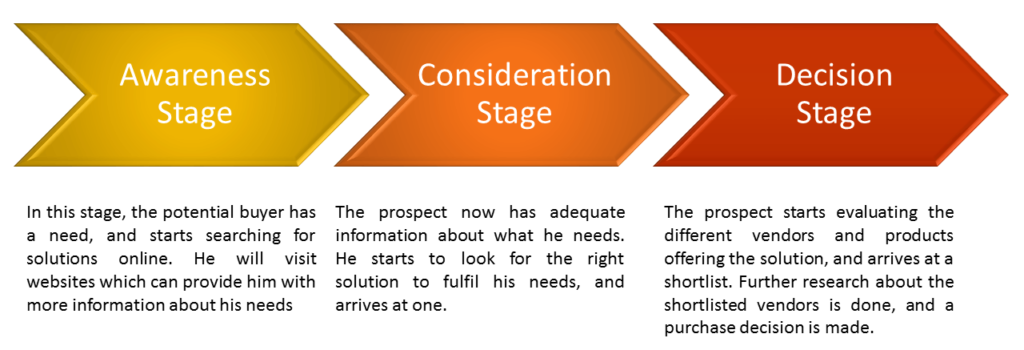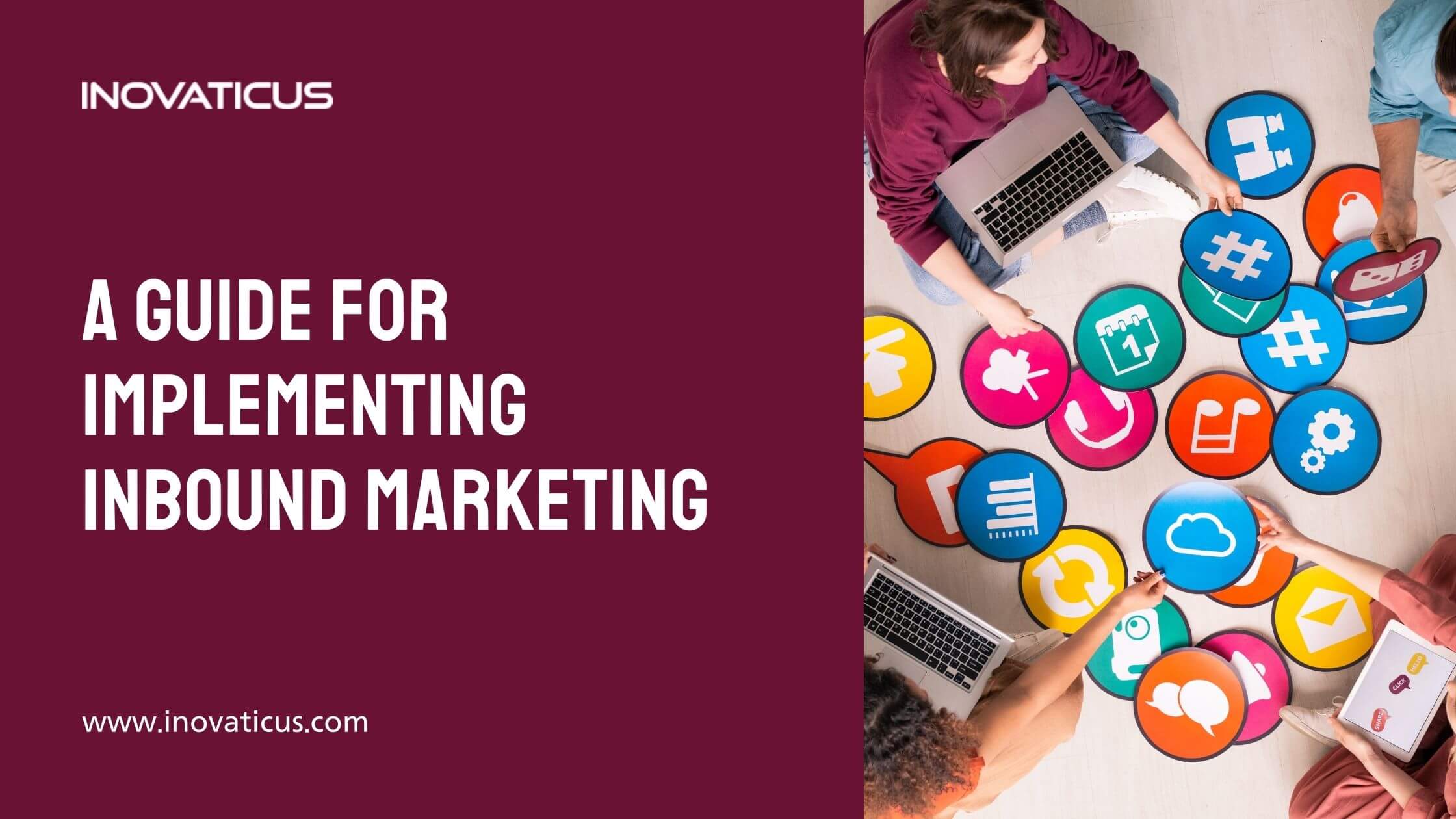Inbound Marketing is bringing about a revolution in the way companies market their products. The idea of attracting visitors by providing them with useful information and content is radically different from the somewhat forceful nature of traditional sales practices. Inbound beliefs in convincing the customer to buy the products, and not in pushing the products down his throat. If you want your business to really flourish, then choose an inbound marketing agency to help you out.
While many companies are very excited about inbound marketing, many of them are not sure about how to actually implement it. Inbound marketing has to be implemented in a step-by-step way. It takes time and patience. The results too may take some time to show up initially. But if it is done in the right way, the results will continue to keep coming steadily.
Table of Contents
Steps in the implementation of inbound marketing:
Let us now see what are the steps involved in the implementation of inbound marketing.
1. Goal setting:
Start by deciding on the business outcomes that you want to achieve. It may be getting more traffic to your website, getting more leads, or an increase in sales conversions. The marketing goals will have to be aligned with your corporate goals so that inbound marketing can get you better business results.
2. Creating buyer personas:
Identify the type of customers you want to target and segment them as per their personalities, backgrounds, demographics, tastes and preferences, etc. For inbound marketing to be successful, you have to create buyer personas, which are fictional characters representing each type of customer who might use your products. . Different engagement strategies may have to be worked out for each buyer persona in the subsequent steps.
3. Develop a content strategy:
The inbound philosophy is based on empowering customers with the right information and knowledge. This is done by creating content that seeks to empower the target customers.
As per Hubspot, a buyer goes through several stages of research before making the final decision to purchase. This is known as the Buyer’s Journey.
A clear understanding of the Buyer’s Journey will enable you to create content targeting prospects in each stage.

Source: HubSpot
There is a need to create a variety of content for every stage of the buyer’s journey. These will work towards graduating the prospect to the subsequent stage and convince him to complete the purchase. The content strategy of your company needs to be defined for each of these stages.
You should also create a content calendar specifying the dates on which content has to be produced, topics and the person responsible for creating the content. Choose an inbound marketing agency if you need help in creating an effective content calendar for your business.
4. Content creation :
This is a continuous effort in inbound marketing. A considerable time and energy have to be spent in creating useful and interesting content which can draw people’s attention.
Always do keyword research to decide on topics on which content can be created by you. Preferably choose keywords that are trending, so that attracting the attention of the prospects becomes easier.
5. Content distribution:
This is as important as content creation. You need to distribute the content through popular channels so that it reaches the maximum number of people. Popularize the content through the website, email and social media too. You may also get in touch with owners of popular websites to explore the possibility of writing guest blogs for them.
6. Search Engine Optimization:
SEO is particularly important for getting organic traffic to your website. Do an SEO audit of your website to determine how you can improve the site to get better ranks in search results. Thereafter, apply Search Engine Optimization techniques to ensure that your website is ready to attract visitors, and keep them engaged. If the website is not optimized, then the bounce rate will be high and you will lose the attention of the prospects forever.
7. Landing pages and CTAs:
You may need to offer an incentive to the prospective customers if they sign up for your email lists, fill up surveys or complete any other activities which will help you to engage with them in the future. You will also need to create landing pages displaying these offers and incorporate exciting Calls to Action (CTA) in various parts of the website. The offer, landing page and CTA need to work in tandem to stimulate the customers to act in certain ways that will be beneficial for your business.
8. Nurture your leads:
Remember that your competitors are also vying for the attention of the same customers. So you must stay on the top of the mind of your prospects when they make the crucial decision to purchase. The same is true for existing customers also, as they are the sources of your repeat sales. Respond to their queries, keep them updated with what’s happening in your organization and conduct surveys and polls. Use Social Media and email workflows to stay in touch with them. Frequent and timely interactions will also help to build your brand and to get positive mentions on social media.
9. Align the marketing and sales teams:
For the success of inbound, your marketing and sales teams must work hand in hand to achieve the business and marketing goals that you have set. Their KPIs should be aligned properly, so that both teams collaborate, and not compete with each other. This will ensure that the best conversion rates are achieved.
In inbound marketing, leads are mainly generated by the marketing team and passed on to the sales team for closure. Hence, both teams should share responsibilities and keep each other informed about important information regarding the leads being followed up.
This might not be as easy as it sounds. Keep in mind that these teams have traditionally been accustomed to reaching out to the customers to get their sales. Inbound requires them to think and behave very differently. This is a change that many employees might find to be difficult to accept, and some resistance from them is quite expected.
To get them on-board, discuss the why what, and how of inbound in town halls or one-to-one meetings and make them aware of the benefits of inbound. Educate them well, and soon they will understand that this can be a win-win situation for them as well as the customers.
10. Marketing automation:
As you have already seen, inbound marketing involves multiple steps and requires the involvement of many people for its success. This makes managing the processes manually almost impossible, especially if your organization is large. So consider implementing marketing automation and CRM software. These will reduce the manual efforts, and generate timely alerts and generate useful insights. This will be extremely useful in making the inbound journey of your organization much smoother.
How an inbound marketing agency can help you:
Are you now wondering who will implement so many things for you?
There are two ways in which you can implement inbound marketing for your organization:
- Build a team of inbound certified professionals, or
- Hire an inbound marketing agency.
The first option can be a good choice if your organization is large and you need a dedicated team to handle the implementation and subsequent executions. You may still engage an inbound marketing agency in the role of a strategy consultant, while your in-house team executes the strategies on the ground.
For most of the other companies, especially SMB’s, choosing an inbound marketing agency will be the better option. The inbound marketing agency will come up with the strategy and also implement it, freeing up your time to focus on your core activities. Most agencies work on a retainer model when they have to provide inbound marketing services on an ongoing basis.
If you are also as excited as us about inbound marketing, you can comment below or get in touch with us to know more about how we can help you to implement this revolutionary marketing strategy.




Leave a Reply